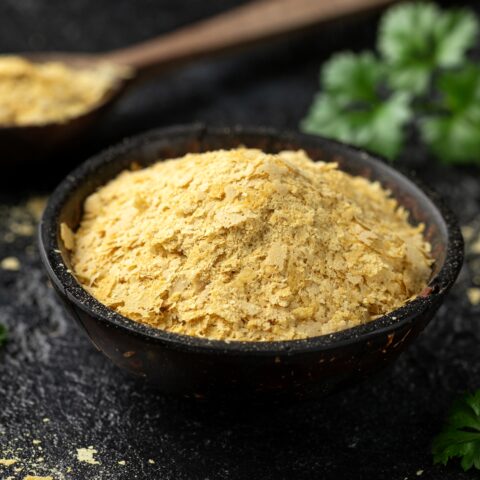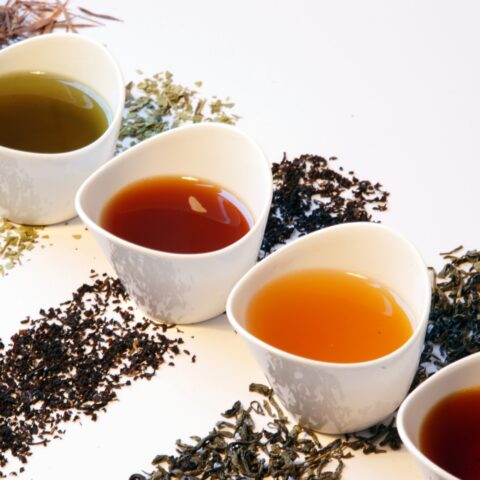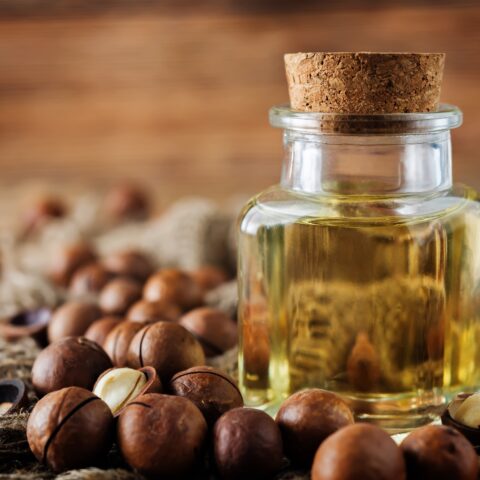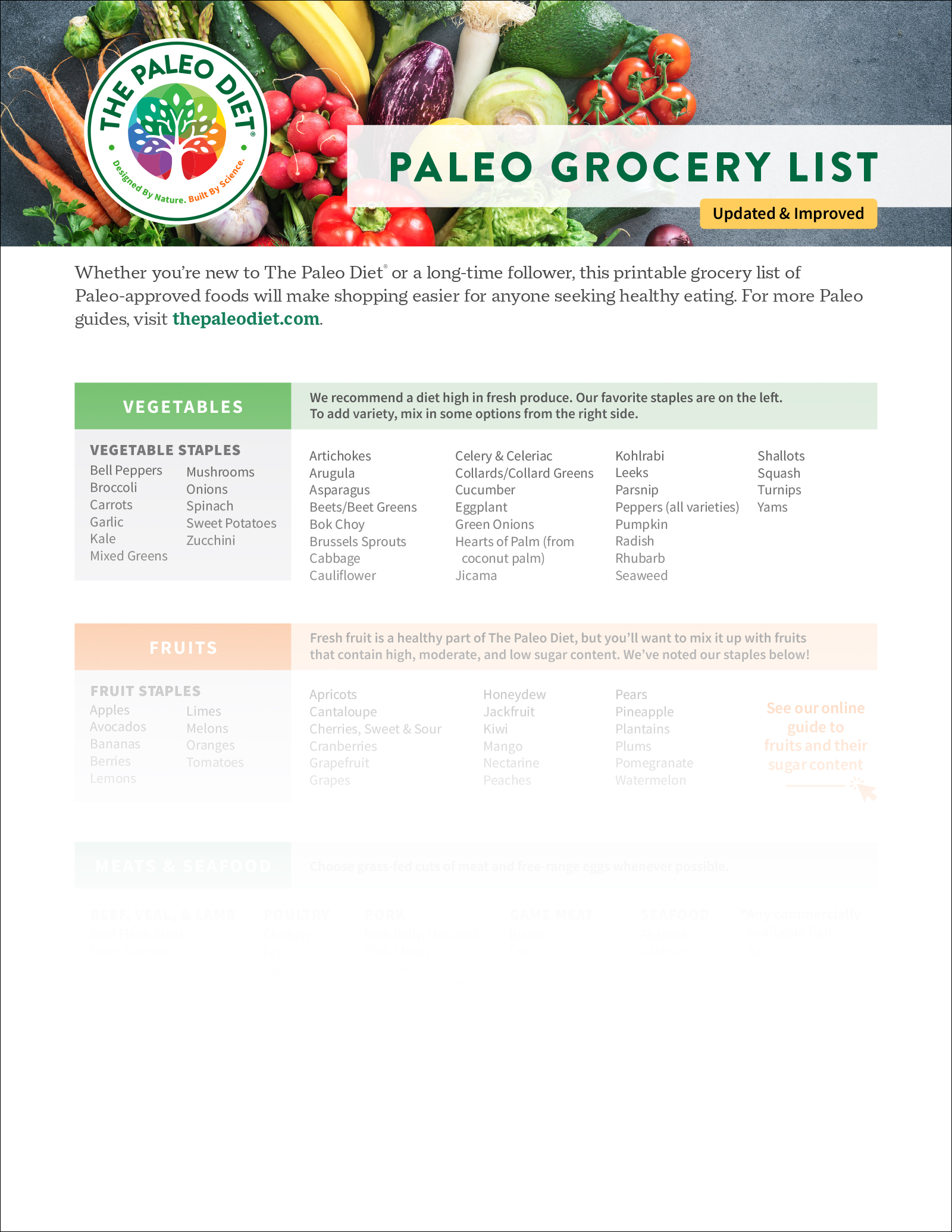Are There Benefits to Beef Tallow?
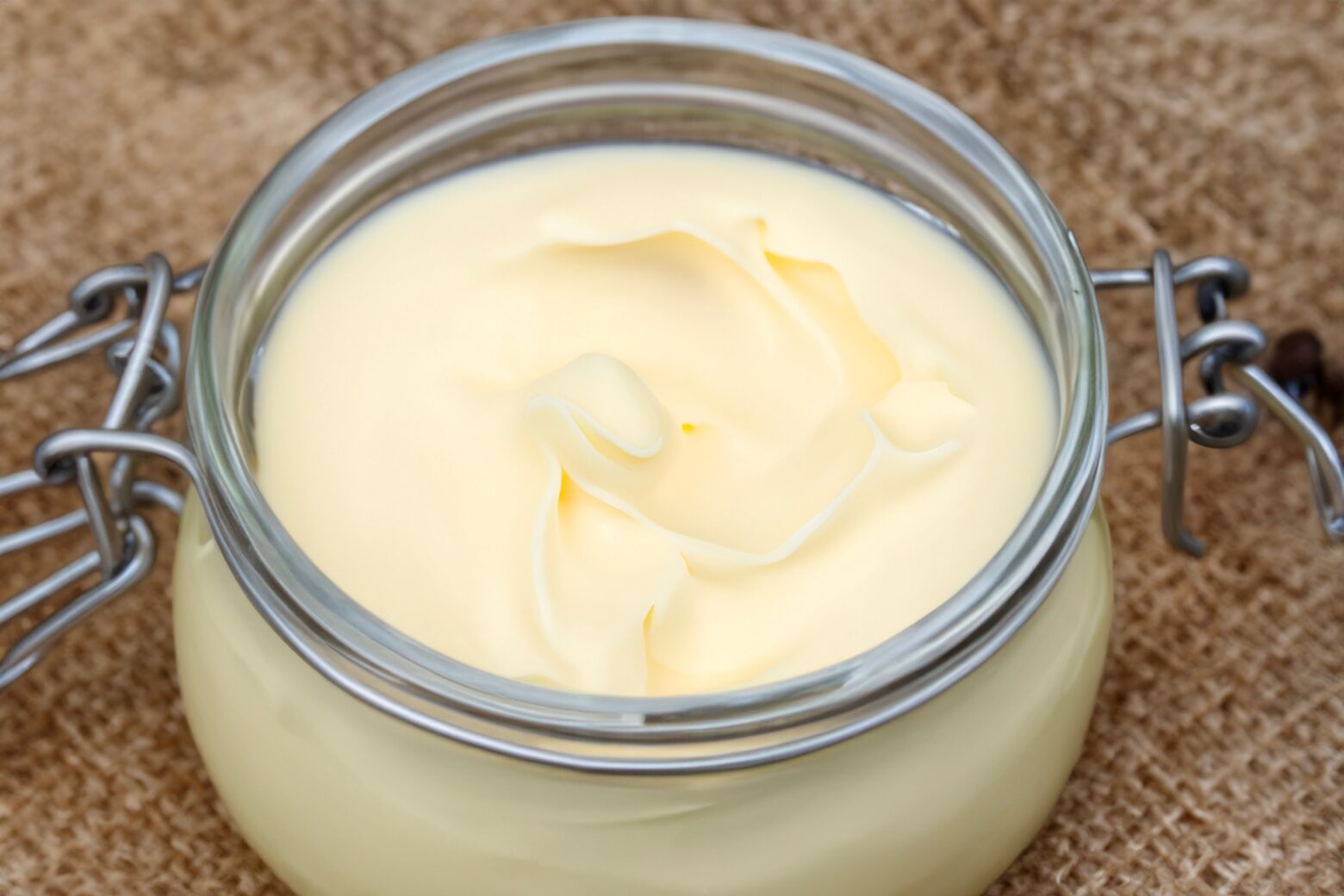
The Paleo Diet® is supported by users like you. As an Amazon Associate, we earn commission from qualifying purchases at no extra cost to you. We test and recommend only the products we trust for the best experience.
Two thousand twenty-five is the year of beef tallow. Whether it’s a public figure debating the benefits of beef tallow, or the viral TikTok trend of using beef tallow for healthy skin, you’ve likely heard about it one way or another this year. It’s still a new topic, so many are asking: What is beef tallow? How is it made? Is beef tallow good for the skin? What are the pros and cons of consuming beef tallow?
Let’s dive into some of these questions and uncover the truth behind the beef tallow frenzy.
What Is Beef Tallow?
First things first: What exactly is beef tallow? Josh Curtiss, co-owner of Western Daughters Butcher Shoppe and COO/CFO of Western Daughters Kitchen explains that beef tallow—similar to lard—is clarified beef fat that has been slowly rendered down into a liquid. Most commonly, this fat is used to make culinary beef tallow. However, it can also be used for making candles, greasing agents, soaps, moisturizers, and other skincare products.
Let’s break it down even further. According to the U.S. Department of Agriculture (USDA), beef tallow contains a variety of nutrients, including choline, monounsaturated fats, polyunsaturated fats, vitamin E, and vitamin D.1 Curtiss also pointed out that the fat surrounding the kidneys is particularly high in stearic acid, a type of saturated fatty acid.
These aren’t your typical everyday nutrients, and while they offer some potential benefits, they also come with a few considerations when consuming.
Is Beef Tallow Healthy?
Many people want to know: Is beef tallow healthy? While the answer isn’t as simple as a yes or no, we can share what the research says so you can make an informed decision for yourself.
Potential Health Benefits of Beef Tallow
According to the USDA’s nutritional breakdown of beef tallow, this ingredient is packed with various types of fats, especially saturated fats. For years, there has been ongoing debate about whether saturated fats are harmful, with many studies suggesting a potential link to an increased risk of heart disease.
However, Dr. Loren Cordain, the founder of The Paleo Diet, questioned the validity of this research in his book, The Paleo Answer, pointing out several issues with the studies often cited to support this claim. He explains that these studies only measured total blood cholesterol levels after participants consumed foods high in saturated fats, rather than examining the total cholesterol to HDL cholesterol ratio, which is a more meaningful indicator of heart disease risk.2 Overall, these ratios were improved after the subjects consumed saturated fats, which in turn reduced the risk of cardiovascular disease, stroke, diabetes, and artery disease.3
The stearic acid in beef tallow appears to have a dual role in health. It is shown to both lower and improve the cholesterol profile, reduce inflammation, and may have benefits for neurological disease.4,5 But when consumed in too high a quantity, it can cause liver toxicity and contribute to insulin resistance.4
Let’s dissect the fats a bit more. Beef tallow contains a good amount of monounsaturated fats, and studies have shown their potential for reducing body fat and insulin resistance in conjunction with a moderate or high-carb diet, but researchers do caution against extrapolating the health benefits of monounsaturated fats in plant foods to animal foods.6,7
Beef tallow also contains polyunsaturated fatty acids (PUFAs) such as omega-3 and omega-6, but the portions are small and not considered significant. Researchers agree that the main fatty acids in beef tallow are monounsaturated fats and saturated fats.8,9
Moreover, after analyzing the nutritional breakdown of beef tallow, Chief Science Officer of The Paleo Diet, Dr. Mark Smith, explains that beef tallow includes no antinutrients.
Considerations When Consuming Beef Tallow
All that being said, nothing is perfect. Too much of one thing is never good, therefore, you do not want to over-consume beef tallow. Stearic acid has health benefits in low quantities, but overconsumption can lead to dyslipidemia, inflammation, and even promote cancer.4,6
Although beef tallow is filled with nutrient-dense ingredients and healthy fats, it’s still important to balance these fats with unsaturated fatty acids from plants and other foods.7 In addition, some of these risks can be reduced by eating beef tallow where the omega-3 content has been enhanced.11
Think of it this way: Dr. Smith explains that when our ancestors were alive, they had to hunt for their food, prepare it, and then eat it. Because of that process, they could only consume so much fat—they didn’t have the ability to overeat it. Obviously, that’s not the case in modern times, but the key is to be mindful of what we eat and aim to include a variety of foods in our diet to get a full range of nutrients.
So Is Beef Tallow Paleo?
The answer is yes. Pure beef tallow with no extra additives is 100% Paleo. If you buy beef tallow instead of making it at home, check the ingredients list first to see if it is a quality product.
Cooking with Beef Tallow
Since it’s a byproduct of beef, tallow carries a rich, savory flavor that enhances just about any dish. It’s especially great for stir-fries, where it adds depth and a subtle beefy taste, or in any recipe with beef:
One of the best things about cooking with beef tallow is that it has a higher smoke point than most cooking oils and butter—between 400°F and 480°F, depending on the purity.10 This means it can handle high heat without breaking down or burning too quickly, making cooking easier and healthier, as it helps preserve the nutrients in the food as well.
That’s why beef tallow is an excellent alternative to seed oils when you’re roasting, frying, or searing. It’s a flavorful, nutrient-friendly swap that holds up beautifully under heat.
Beef Tallow and Skin Health
Board-certified nurse practitioner Dr. Shane Grindle is a big fan of cutting-edge health trends, like using beef tallow in skincare.9 He explains that beef tallow contains both type 1 and type 2 collagen, which makes it a compelling natural ingredient in beauty products for promoting plump, youthful-looking skin.
That said, beef tallow isn’t a miracle product. To truly reap the benefits, it should be used alongside other skincare essentials that hydrate and exfoliate. “Consistency is key,” says Dr. Grindle.
Furthermore, research shows that when combined with other ingredients, a beef tallow mixture has been proven to improve skin barrier functioning and improve itchy skin.12 Your overall skin health, (and not just a single product) will make the biggest difference over time.
It’s also important to remember that everyone’s skin is different. Whether you’re dealing with sensitive skin, acne, or other concerns, proceed with caution. We recommend doing a patch test when using beef tallow in skincare products, especially since it’s quite oily and may not work well for acne-prone skin. Like with many skincare products, beef tallow can cause negative reactions with some people’s skin.
Finally, sourcing matters. Make sure you’re using beef tallow from a trusted, reputable supplier. If you’re working with raw beef fat or unrefined tallow, Dr. Grindle cautions against leaving it on your skin for too long, as it can attract bacteria in its raw form. The choice is up to you whether or not you want to use beef tallow as skincare.
How to Make Beef Tallow
You don’t need to own a farm and raise cattle to make beef tallow (although that would be nice). All you need to do is buy cow fat from your local butcher shop and you can make beef tallow in the comfort of your own kitchen.
Curtiss gave us some professional advice on how to make homemade beef tallow. First, grind up the beef fat to make it easier to render. If you have something like a standing mixer meat grinder attachment, that would be the easiest way to do this. But you can also chop it up into small pieces if you don’t have a grinder. Next, place the ground or cut beef fat into a covered, oven-safe pot and cook in the oven for about 8 hours at 200°F.
Once the cooking is complete, strain the liquified fat through a fine mesh strainer to remove any remaining solids. You can store the fresh beef tallow in Mason jars or other containers and place them in the refrigerator to harden.
Curtiss shared some insider tips with us about storing beef tallow. While most in the food industry recommend refrigerating or freezing it, he explained that it’s not actually necessary. Just like people often leave butter out on the counter, you can do the same with beef tallow. In the end, the choice is yours.
References
- (2019, April 1). Fat, beef tallow [Review of Fat, beef tallow]. FoodData Central; U.S. Department of Agriculture . https://fdc.nal.usda.gov/food-details/171400/nutrients
- Cordain, L. (2012). The Paleo Answer : 7 Days to Lose Weight, Feel Great, Stay Young. John Wiley & Sons.
- (2022). Consequences of High Cholesterol [Review of Consequences of High Cholesterol]. American Heart Association. https://www.heart.org/-/media/Files/Health-Topics/Cholesterol/Consequences-of-high-cholesterol.pdf?sc_lang=en
- Shen X, Miao S, Zhang Y, Guo X, Li W, Mao X, et al. Stearic acid metabolism in human health and disease. Clin Nutr 2025;44:222–38. https://doi.org/10.1016/j.clnu.2024.12.012.
- Denke M. Role of beef and beef tallow, an enriched source of stearic acid, in a cholesterol-lowering diet. Am J Clin Nutr 1994;60:S1044–9. https://doi.org/10.1093/ajcn/60.6.1044s.
- DiNicolantonio JJ, O’Keefe JH. Monounsaturated Fat vs Saturated Fat: Effects on Cardio-Metabolic Health and Obesity. Mo Med 2022;119:69–73. https://pubmed.ncbi.nlm.nih.gov/36033137/
- Petersen KS, Maki KC, Calder PC, Belury MA, Messina M, Kirkpatrick CF, et al. Perspective on the health effects of unsaturated fatty acids and commonly consumed plant oils high in unsaturated fat. Br J Nutr 2024;132:1039–50. https://doi.org/10.1017/s0007114524002459.
- Jones PJH, Toy BR, Cha MC. Differential Fatty Acid Accretion in Heart, Liver and Adipose Tissues of Rats Fed Beef Tallow, Fish Oil, Olive Oil and Safflower Oils at Three Levels of Energy Intake. J Nutr 1995;125:1175–82. https://doi.org/10.1093/jn/125.5.1175.
- Russell MF, Sandhu M, Vail M, Haran C, Batool U, Leo J. Tallow, Rendered Animal Fat, and Its Biocompatibility With Skin: A Scoping Review. Cureus 2024;16:e60981. https://doi.org/10.7759/cureus.60981.
- Does beef tallow have a high smoke point? – Chef’s Resource. (2024, April 7). Chef’s Resource. https://www.chefsresource.com/does-beef-tallow-have-a-high-smoke-point/
- Zheng J, Lee J, Byun J, Yu D, Ha J-H. Partial replacement of high-fat diet with n-3 PUFAs enhanced beef tallow attenuates dyslipidemia and endoplasmic reticulum stress in tunicamycin-injected rats. Front Nutr 2023;10:1155436. https://doi.org/10.3389/fnut.2023.1155436
- Lee, Y.-S., Yang, W.-K., Jo, E.-H., Shin, S. H., Lee, Y.-C., Park, M.-C., & Kim, S.-H. (2020). NCM 1921, a Mixture of Several Ingredients, Including Fatty Acids and Choline, Attenuates Atopic Dermatitis in 1-Chloro-2,4-Dinitrobenzene-Treated NC/Nga Mice. Nutrients, 12(1), 165–165. https://doi.org/10.3390/nu12010165
Isabella Mead
Isabella Mead is the Assistant Project Manager at The Paleo Diet and has experience in creating digital content for lifestyle and nutrition brands.
More About The Author
